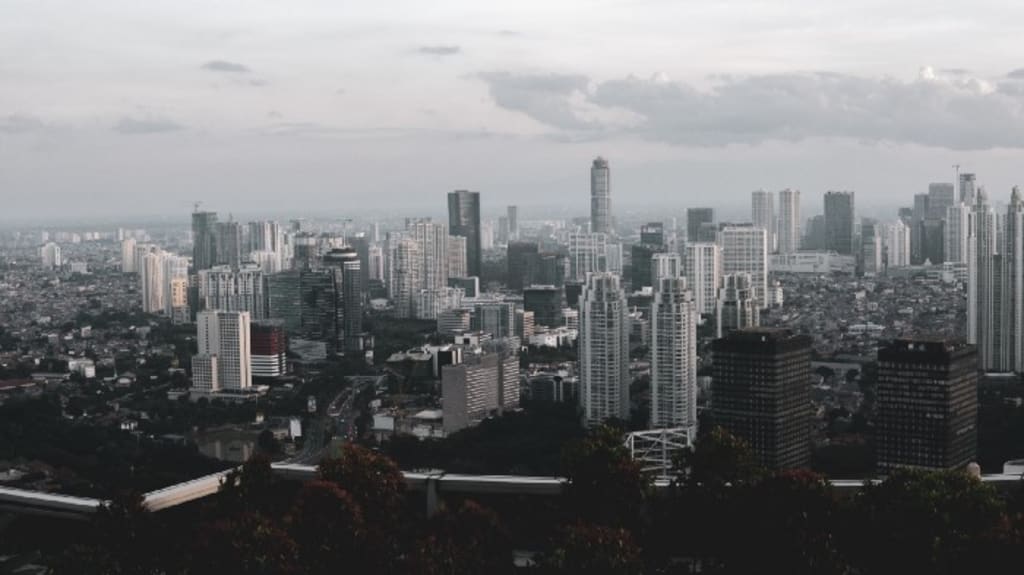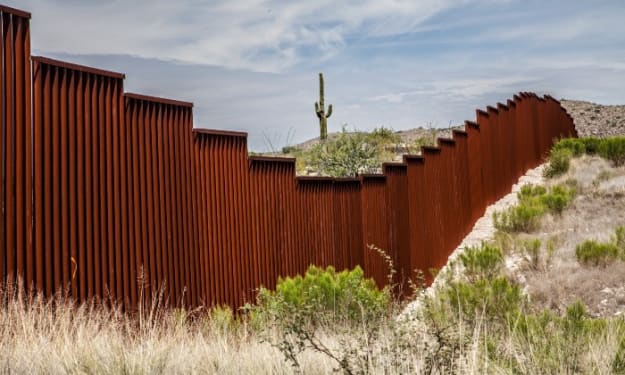Major Asian Cities Are Sinking Under Climate Change
Jakarta is sinking. Fast. And they’re running out of time.

In 2019, Indonesian President Joko Widodo announced the impending move of the country’s administrative capital from Jakarta to East Kalimantan on Borneo island. While government officials leave the current capital, about 40 percent of Jakarta is below sea level and some portions of the huge metropolis are sinking at a rate of about eight inches per year.
“The potential for Jakarta to be submerged isn’t a laughing matter. If we look at our models, by 2050 about 95% of North Jakarta will be submerged,” reported Heri Andreas, a researcher and lecturer at the Bandung Institute of Technology, in a 2018 BBC article Jakarta, the fastest-sinking city in the world.
The low-lying coastal city isn’t only gravely threatened by rising sea levels, but it is also literally sinking into the ground, as its residents pump out their drinking water from natural, below-ground pools called aquifers. When the water below ground decreases, the solid ground above it sinks, often bringing down buildings and whatever else is on the ground above. Subsidence is the process in which an area of land gradually sinks.
“The walkways are like waves, curving up and down, people can trip and fall,” described one resident of Muara Baru in Jakarta, the fastest-sinking city in the world.
This is such a problem in Jakarta that the government regulates the amount of groundwater one can pump out, but these measures have been largely unsuccessful. In one audit in which Indonesian authorities examined 80 commercial buildings in a wealthy area of Jakarta called Jalan Thamrin. 56 of those 80 buildings extracted their groundwater and 33 were breaking groundwater extraction regulations. Most of Jakarta’s surface water is highly polluted, and refining it for consumption is much more expensive and technically complex than continuing groundwater extraction.
Nearly 10 million people live in Jakarta, giving it a higher population than New York City. When combined with neighboring cities, the combined metropolis has a staggering population of over 30 million. Jakarta has some of the world’s worst air quality and is one of the most vulnerable cities in the world to climate-related disasters.
Of these millions of people in Jakarta, only about one-fourth of residents are on a piped water system. The rest either extract their own water or buy it from vendors who do the extracting. Even if the country could halt the land subsidence, the problem of rising sea levels in a low-lying city is still a huge cause for concern. The giant metropolis is facing a devastating war on two fronts, both of which would require a huge financial and political will to stop. The government built canals and seawalls to halt some of the rising waters for now, but it’s a temporary solution to a quickly accelerating problem.
“The scale of water use in Jakarta is immense, and the cost of the infrastructure and the cost of the energy to desalinate the ocean water would be massive. The message here is that technology can’t get us out of this. You need something more difficult — you need institutional solutions, you need political will to do something radical,” said Michael Kiparsky, the director of UC Berkeley’s Wheeler Water Institute, to Matt Simon in the article Jakarta Is Sinking. Now Indonesia Has to Find a New Capital for Wired.
But the problem of sinking coastal cities in Asia isn’t limited to Jakarta.
Singapore Prime Minister Lee Hsien Loong announced in 2019 that protecting the small country from rising sea levels will have an estimated cost of a staggering $100 billion or more in the next few decades. One study by the World Bank found that Bangkok could be 40 percent submerged by 2030. Coastal erosion and rising sea levels will likely make almost all island atolls uninhabitable by 2050.
In early 2020, risk analysis company Verisk Maplecroft released a report analyzing which of the world’s major cities are most threatened by rising sea levels, including Alexandria, Dongguan, Dubai, Guangzhou, Ho Chi Minh City, Jakarta, New York City, Shanghai, and Tokyo, among others. 11 of the 15 cities are in Asia.
China, for instance, has $348 billion of GDP and eight million inhabitants in regions of high or extremely high risk in the event of the next century’s projected sea level rise.
“Around a fifth of Guangzhou’s urban area is classified as high or extreme risk in the Sea Level Rise Index. There are over 3,000km of sea defenses in the Pearl River Delta, but a 30cm rise in global sea level would overwhelm many of them… It’s core economic manufacturing activities are not easily relocated and have long investment cycles,” Verisk Maplecroft analysts write in the 2020 Environmental Risk Outlook.
Not only is the climate change crisis expensive — $33 billion is the estimate for Indonesia’s capital relocation — but it could have disastrous results for global stability.
Climate change will increase food and water insecurity in the Asia Pacific region, as well as the need for forced migration for those fleeing both natural disasters and rising sea levels. Fish stocks, a staple for the region, are rapidly depleting and will only continue to do so with increasing temperatures and growing ocean acidification accelerating the issue. As more countries compete for fewer fish in the South China Sea, tension and violence could increase due to the many competing territorial claims.
Shiloh Fetzek and Dennis McGinn discuss the disastrous effects climate change could have on global security in the article Climate Change Is a Security Threat to the Asia-Pacific published in The Diplomat in August 2020.
“The role of climate change in compounding tensions between states is another important lens. Reduced or altered water flows in the Himalayas and Indus river basin could further degrade the already tense India-Pakistan relationship by stressing the Indus Water Treaty, or necessitating more silt-clearing dam designs. This creates the potential for bad-faith actions, misunderstandings, or scaremongering, for example around fears that India might intentionally release floodwaters, or that Pakistan may accuse India of doing so in the context of climate change-driven flooding. The Indus river system is particularly crucial to Pakistan’s economy and energy security, and a Chinese partnership to build a cascade of five dams in Pakistani-held Kashmir and Khyber Pakhtunkhwa province under the Belt and Road Initiative has already raised concerns in India over sovereignty. Such dynamics threaten to deepen distrust and increase tensions between states, and this is without the climate-driven threat to water supplies.”
As world leaders wring their hands, science shows us that the climate crisis will only worsen the longer the world goes without widespread and radical action.
About the Creator
Raisa Nastukova
Freelance journalist focused on stories of both Kashmir culture and society as well as the rising tide of climate change.






Comments
There are no comments for this story
Be the first to respond and start the conversation.